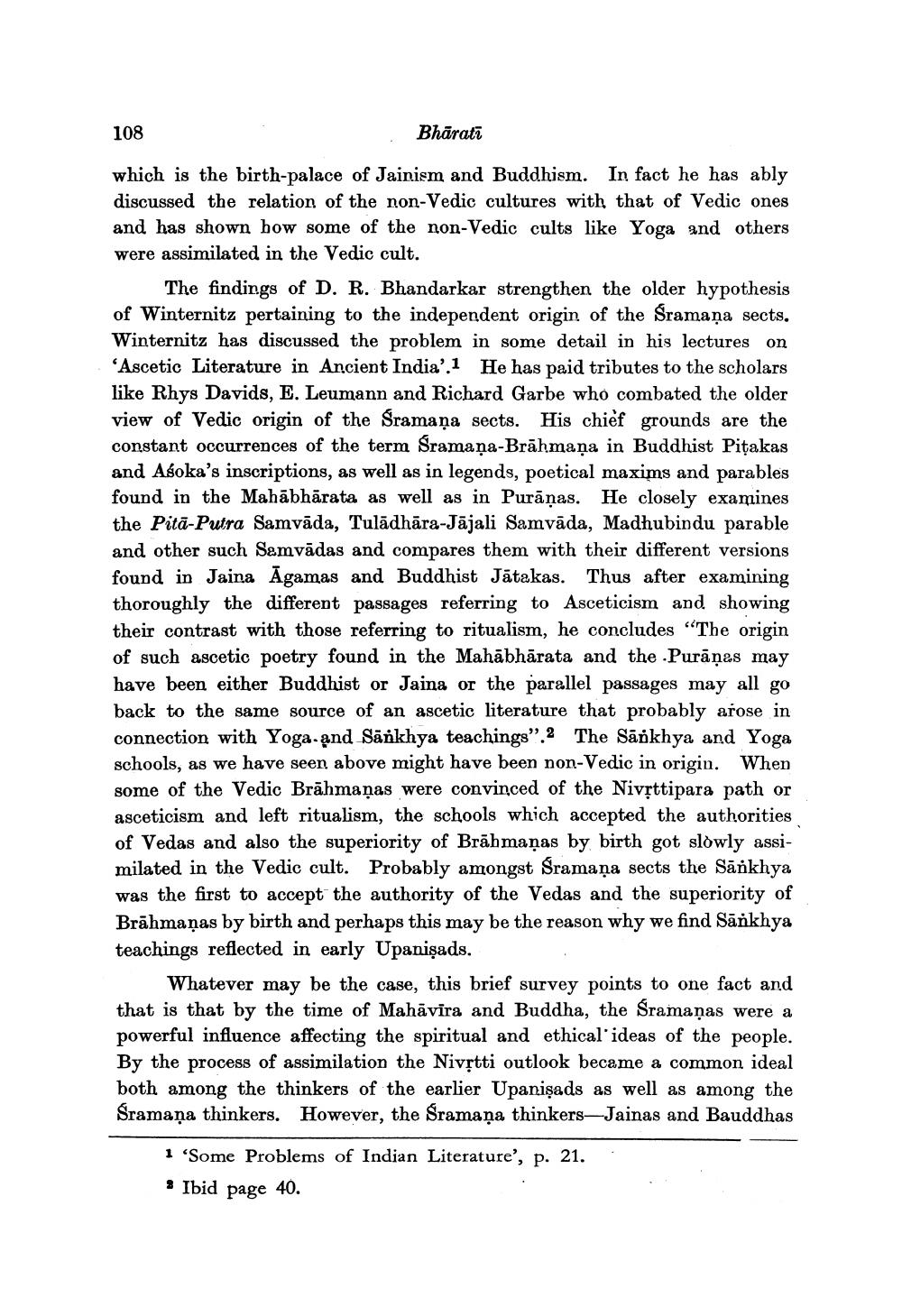Book Title: Contribution Of Jaina Writers To Nyaya Vaisesika Literature Author(s): J N Jaitley Publisher: J N Jaitley View full book textPage 4
________________ 108 Bharati which is the birth-palace of Jainism and Buddhism. In fact he has ably discussed the relation of the non-Vedic cultures with that of Vedic ones and has shown bow some of the non-Vedic cults like Yoga and others were assimilated in the Vedic cult. The findings of D. R. Bhandarkar strengthen the older hypothesis of Winternitz pertaining to the independent origin of the Sramaņa sects. Winternitz has discussed the problem in some detail in his lectures on 'Ascetic Literature in Ancient India'.1 He has paid tributes to the scholars like Rhys Davids, E. Leumann and Richard Garbe who combated the older view of Vedic origin of the Sramaņa sects. His chief grounds are the constant occurrences of the term Sramaņa-Brāhmaṇa in Buddhist Pițakas and Asoka's inscriptions, as well as in legends, poetical maxims and parables found in the Mahābhārata as well as in Purāņas. He closely examines the Pitā-Putra Samvāda, Tulādhāra-Jājali Samvāda, Madhubindu parable and other such Samvādas and compares them with their different versions found in Jaina Āgamas and Buddhist Jätakas. Thus after examining thoroughly the different passages referring to Asceticism and showing their contrast with those referring to ritualism, he concludes "The origin of such ascetic poetry found in the Mahābhārata and the Puranas may have been either Buddhist or Jaina or the parallel passages may all go back to the same source of an ascetic literature that probably arose in connection with Yoga and Sankhya teachings".2 The Sāökhya and Yoga schools, as we have seen above might have been non-Vedic in origin. When some of the Vedic Brāhmaṇas were convinced of the Nivịttipara path or asceticism and left ritualism, the schools which accepted the authorities of Vedas and also the superiority of Brāhmaṇas by birth got slowly assimilated in the Vedic cult. Probably amongst Sramaņa sects the Sankhya was the first to accept the authority of the Vedas and the superiority of Brāhmaṇas by birth and perhaps this may be the reason why we find Sankhya teachings reflected in early Upanişads. Whatever may be the case, this brief survey points to one fact and that is that by the time of Mahāvira and Buddha, the Sramaņas were a powerful influence affecting the spiritual and ethical ideas of the people. By the process of assimilation the Nivștti outlook became a common ideal both among the thinkers of the earlier Upanişads as well as among the Sramana thinkers. However, the Sramaņa thinkers-Jainas and Bauddhas . 1 'Some Problems of Indian Literature', p. 21. Ibid page 40.Page Navigation
1 2 3 4 5 6 7 8 9 10 11 12 13 14 15 16 17 18 19 20 21 22 23 24
